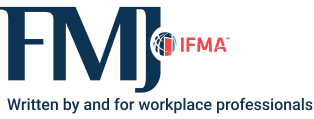4 Steps for Spring Maintenance
Preparation & efficiency, inside & out

The winter months provide ample opportunity for multisite facility managers to ensure their properties are in optimal condition for the arrival of spring. A comprehensive plan combined with a strong maintenance partner is crucial for maintaining the longevity of properties while maximizing efficiency and minimizing long-term costs.
Spring maintenance for commercial properties is more than a seasonal task – it is about building long-term efficiency, managing costs and creating long-term relationships with commercial facilities maintenance partners. The right maintenance provider can become an invaluable partner in this process, helping predict and prevent problems before they arise and ensuring that a comprehensive strategy is in place.
A productive maintenance partnership starts with finding a provider committed to continually evolving to meet the ever-changing service needs of facility managers. For example, a hybrid service model that combines a robust network of service providers with self-performing capabilities allows providers to maximize flexibility and responsiveness. When combined with a robust technology interface, a hybrid service model allows facility managers to find the right solutions. Whether it is managing a large, single location or a multisite portfolio, this approach ensures consistency in service and quality control.
Keys to maximizing efficiency in spring maintenance preparation
The ideal facilities maintenance provider should offer a balance of hands-on experience, technological tools and a flexible service model that suits the needs of specific buildings. The hybrid service model, which combines in-house professionals with a network of trusted service partners, can be an essential tool for facility managers. This model is the backbone of creating a maintenance program tailored to specific needs, geographies and property types.
A provider that deploys and continually enhances technology that seamlessly integrates with leading industry maintenance platforms can significantly improve efficiency and reduce response times. Service providers who make a meaningful investment in these tools can help deliver improved data analytics, predictive maintenance and real-time communication with service providers, ultimately creating a more productive experience. Here are four tips to support a successful maintenance program.
Step 1: Develop a strong RFP
The foundation of any successful partnership with a facilities maintenance provider starts with a strong request for proposal (RFP). A well-crafted RFP sets clear expectations for service levels, deliverables and pricing, ensuring the facilities maintenance provider aligns with different FM needs. It is important to ask the right questions and take a proactive approach to stay on track with budgetary requirements, response time expectations and technology-driven solutions. What preventive maintenance services are available? How are emergency repairs managed? How does technology streamline the process?
A solid RFP should cover key elements such as:
-
Scope of work: Clearly define the services required, including both interior and exterior tasks, frequency of service, and specific focus areas such as pest control, HVAC maintenance and landscaping.
-
Timeline: Establish concrete timelines and deadlines, including needs for seasonal prep. Be clear about expectations for response times and emergency repairs.
-
Budget constraints: Clearly communicate any budget allowances while confirming the availability of pricing transparency from service providers.
-
Service level expectations: Detail the quality of service expected and incorporate specific benchmarks and expectations.
Step 2: Stay ahead of the curve
When preparing for spring, thorough inspections are essential. Commercial facilities often face a variety of challenges during the winter months, including ice and snow damage, plumbing issues, and the wear and tear from high-traffic areas. A proactive approach is required to prevent seasonal wear and tear from becoming a larger issue.
Interior & exterior inspections
Work with facilities maintenance providers to schedule thorough interior and exterior inspections. A trusted provider with a track record of service success will quickly identify any issues caused by winter weather, such as leaks or water damage. Early detection can prevent these problems from escalating, saving both time and money.
For the interior, FMs should consider prioritizing areas like:
-
Ceiling and roof inspections: Winter storms may have caused water damage that is not immediately visible. Check ceilings for any signs of leaks or water stains that could suggest roof or plumbing issues.
-
HVAC & plumbing systems maintenance: Ensure that heating, cooling systems and plumbing systems are in good condition and schedule air filter replacements and other routine maintenance.
-
Gravity system: Examine the sump pump/sewer ejector systems and the dock leveler pit to ensure proper functionality.
On the exterior, spend time assessing the following areas:
-
Damage to landscaping: Snow, salt and ice can damage plants, turf and trees. Check for any signs of winter kill and assess whether any landscaping needs to be replaced or repaired.
-
Sidewalks & parking lots: In colder climates, salt and ice treatments may have caused cracks or uneven surfaces. Winter plowing can also scrape and damage parking lot surfaces, so repairing these areas before the seasonal rush for services is crucial.
-
Irrigation system: Inspect the irrigation system for damage caused by freezing temperatures. Test for leaks and ensure sprinklers are functioning properly ahead of the warmer months.
Step 3: Interior maintenance focus areas
Interior spring maintenance focuses on improving the comfort, safety and cleanliness of commercial buildings. While exterior work is critical, the interior of the building also requires attention. Some priorities include:
Deep cleaning high-traffic areas
High-traffic areas like lobbies, hallways and bathrooms accumulate dirt, germs and stains that require specialized cleaning. A deep cleaning can improve the overall experience for those who occupy or visit a commercial property.
Pest control assessment & maintenance
Spring can bring a surge in pest activity, so conducting an assessment for potential pest issues is essential. An experienced facilities maintenance provider should inspect the interior of the building for pests like rodents, ants and termites. If any infestations are found, the service provider will work with the FM to implement a pest control plan that includes blocking entry points, sealing cracks and treating affected areas.
Water heater & systems maintenance
Water heaters are critical components in many commercial properties and regular maintenance is vital to prevent breakdowns. Spring is an ideal time to flush and clean water heaters to remove sediment buildup, maximize efficiency and minimize the risk of damage to the system. Inspect plumbing systems for any signs of leaks or wear, particularly in areas prone to freezing in the winter.
Step 4: Exterior maintenance focus areas
While interior work is essential, exterior maintenance ensures that the property remains welcoming, safe and functional throughout its life cycle.
Landscaping as a primary area of focus
As one of the first things people notice about a commercial property, landscaping plays a critical role in curb appeal. Begin by addressing any damage from the winter months, such as frozen irrigation lines or landscaping destroyed by harsh weather. Extremely cold temperatures can cause long-term damage to trees and shrubs. Palm trees and most fruit trees are hearty enough to withstand a short-term freeze; but if palms appear damaged or dead, do not count them out. Start by cutting off only the dead fronds and give them a few months to see if they come back. Facilities maintenance providers will help create and implement a seasonal plan that includes fertilization, aeration and the addition of seasonal color.
Make weed prevention part of spring landscaping clean-up efforts by applying a pre-emergent to flower beds and grassy areas. This is typically done in early spring but aim to do it before weeds are visible with a follow-up application later in the season. Consider updates or enhancements such as adding flowering plants, replacing damaged plants or exploring water-efficient landscaping options that reduce maintenance costs while being environmentally friendly.
Parking lot, ponds & pest control
Parking lots often experience wear and tear during the winter, with potholes, cracks and ice damage affecting their safety and appearance. Schedule repairs and restriping of parking spaces to keep the lot in top condition. Retention ponds that help manage stormwater runoff and reduce the risk of flooding should also be inspected for proper function. They should be inspected ahead of the arrival of the spring rainy season to ensure they are functioning properly.
Finally, though pest control is largely an indoor issue, spring preparations should include cutting down perennial grasses that were not taken care of in the fall to help keep rodents away. Spring is when pests start to reemerge, so it is vital to inspect exterior areas for potential infestations.
Preparing a commercial facility for spring is a vital step toward maintaining its longevity and improving efficiency. facility maintenance managers who embrace foresight, planning and a strong partnership with experienced facility maintenance providers can be sure a property is ready to meet the demands of the season, as well as thriving throughout the year and over its life cycle.

John Catanese is senior vice president at Chain Store Maintenance – an MCS Company. He is a leader on the business development department, focused on retaining and driving growth from existing customers, as well as helping bring on new logo opportunities. Catanese has spent more than 30 years in facility management, serving on multiple industry organization boards with a goal of creating a culture of collaboration for all FM professionals.
Read more on Project Management , Real Estate and Operations & Maintenance
Explore All FMJ Topics









